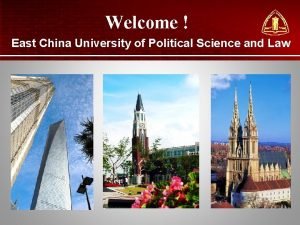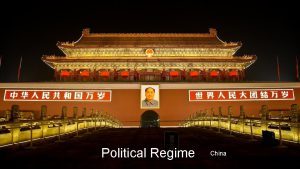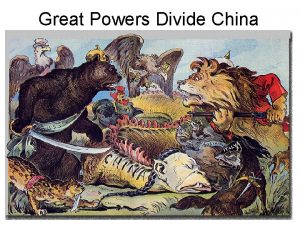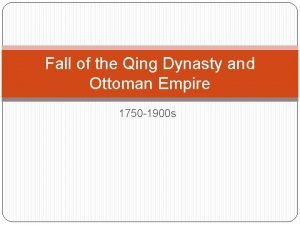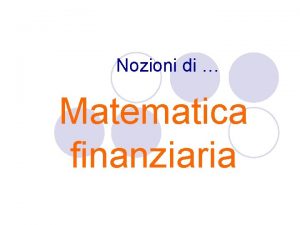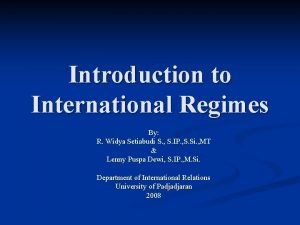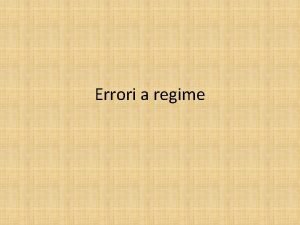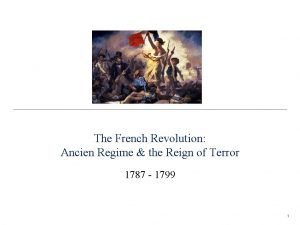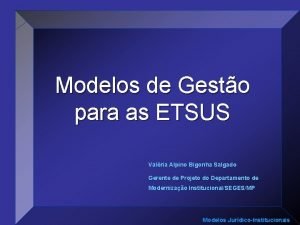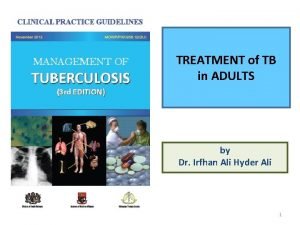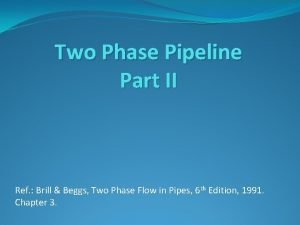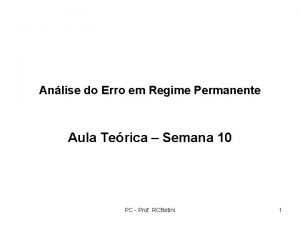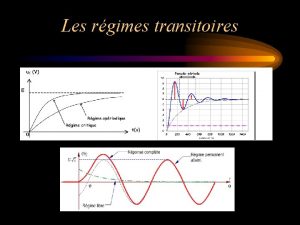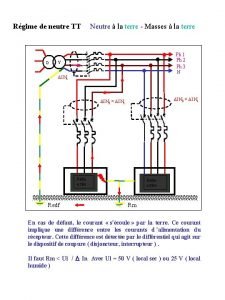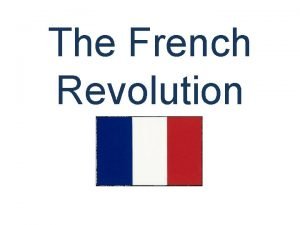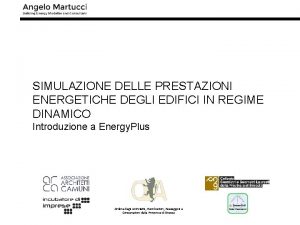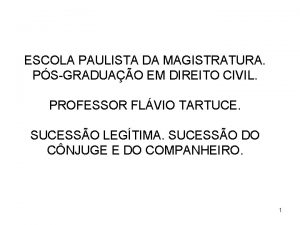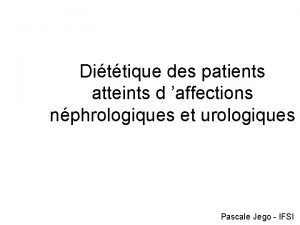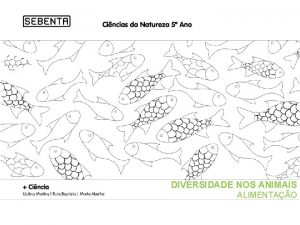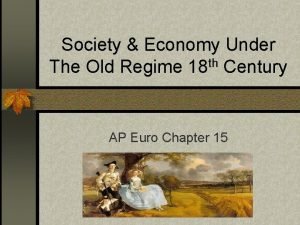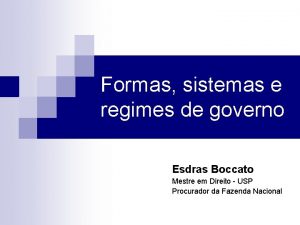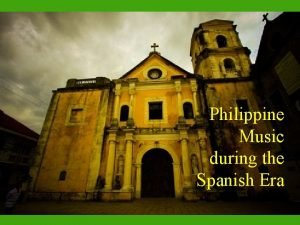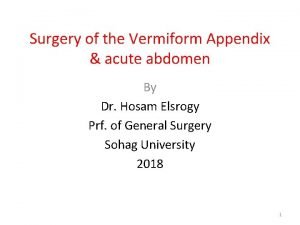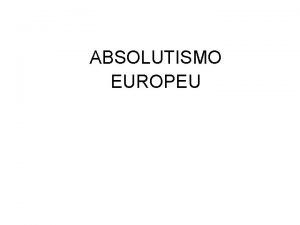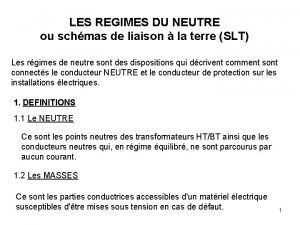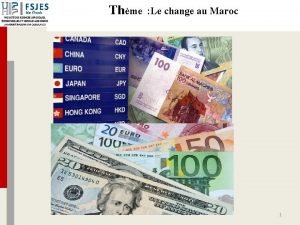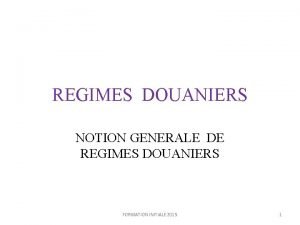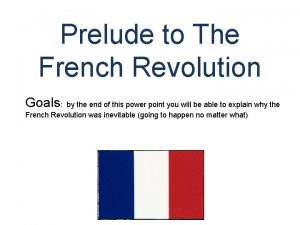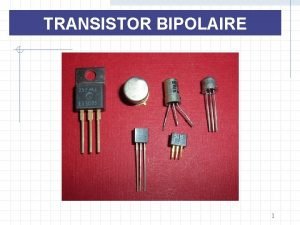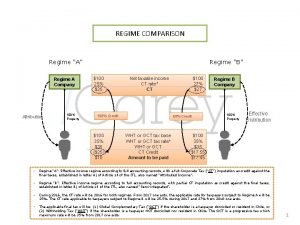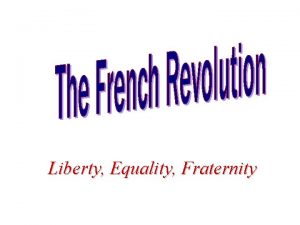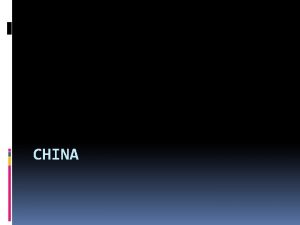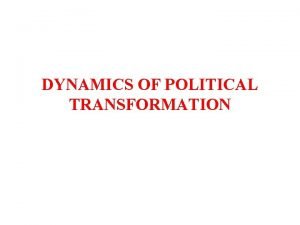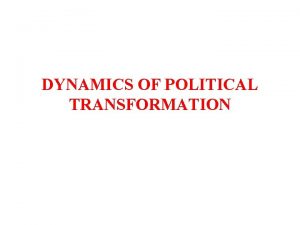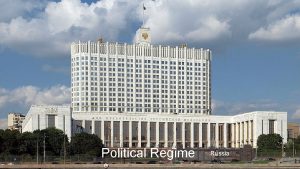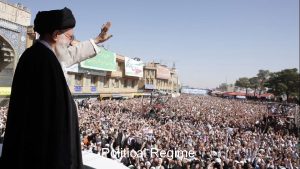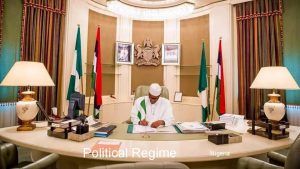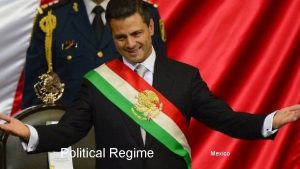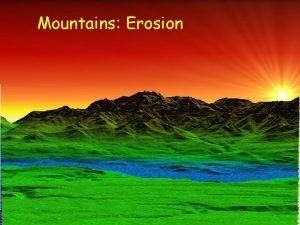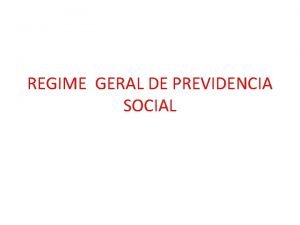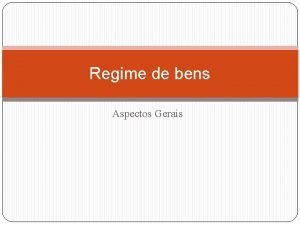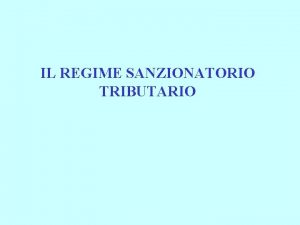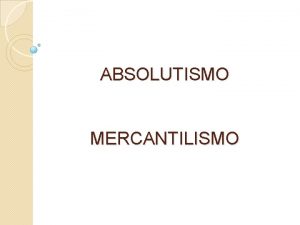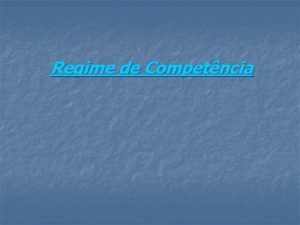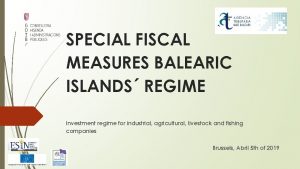Political Regime China China intro What are the
































- Slides: 32

Political Regime China

China intro What are the institutions of Chinese government?

Constitution China

China Constitution There is actually a constitution that gives formal authority to both state & party In recent years, rules have been formalized for policy making, succession, and term and age limits. Political rules is mostly in a “paramount leader” surrounded by a group of about 25 political elites This personal nature of power has mostly meant that rule of law is not that important in China The party always prevails over the state, the formal checks of the state do not hold the party back

China Constitution The current constitution was adopted in 1982 & has been revised 4 times. Includes preamble, general principles, fundamental rights of citizens, structure of the state, and national flag & emblems The 1982 documents reflects Deng’s focus on modernization & domestic stability Class struggle is de-emphasized and puts priority on development 2004 amendments added guarantees of private property & human rights

The Party Institutions China

China The Party State CCP The party state retains the basic structure that the CCP adopted from the USSR The party leadership serves as the vanguard on behalf of the masses Political authority flows from the party elite to those within the party, state, and society who are expected to submit to their authority Rapid economic growth have forced the party state to devolve substantial authority to regional and local offices

China CCP The CCP exercises control through a nomenklatura system. Party committees are responsible for appointment, promotion, transfer, and firing of high level state, party, and even public owned industry personnel The govt & bureaucracy are controlled by “organizational parallelism” All government executive, legislative, and administrative agencies are duplicated at every level by a corresponding party organization

China Politburo Standing Committee CCP The National Party Congress “elects” the Central Committee, which “elects” the Politburo The Standing Committee of the Politburo is the 7 or so members that are the actual top leadership of China The PSC meets weekly and is led by the general secretary of the party. PSC members are “elected” by the Politburo but the general secretary chooses them PSC functions as the actual governing cabinet of the country

China Elections CCP Technically, all these positions are elected The PSC determines this before all ballots are cast. When the Central Committee votes, all candidates run unopposed The Central Committee’s role is ceremonial, but the members are being groomed for top leadership Membership in the CC confirms elite status that was largely earned through personal connections

China National Party Congress CCP The Central Committee is “elected” by the National Party Congress This is most like the nominating conventions of the major parties in the US. It has over 2000 members and meets every five years (coinciding with elections) It’s too big & meets too infrequently to do any real policy making It mostly serves as a venue to announce changes in leadership or policy

China Other party organs CCP There 83 million members of the CCP, organized at local & provincial levels The CCP bureaucracy is the Secretariat that oversees implementation of Politburo decisions & distributes propaganda The Central Military Commission oversees control of the military & reports to the Politburo. It’s headed by the paramount leader of the PRC (general secretary) The Central Committee for Discipline Inspection maintains party loyalty and discipline and roots out corruption Central party structure is in Beijing but each province has a party committee

President China

China President Head of State The president of the PRC is the head of state This is a purely formal position that holds no real power outside of the party This almost always the person who is also the general secretary of the CCP The general secretary/president roles tend to combine to designate the “paramount leader” of China

China President Head of State From Jiang Zemin through Hu Jintao and Xi Jinping it is expected that the president will serve two consecutive terms This is formally limited in the constitution to two terms (but the party can change it)

State Council China

China State Council The State Council is China’s executive branch, the primary organ of daily government activity It’s led by the premier, who is recommended by the Central Committee and then formally elected by the NPC Since 2013 it the premier has been Li Keqiang who will serve 2 consecutive terms alongside president Xi Jinping. The premier tends to be 2 nd or 3 rd ranking member of the Politburo Standing Committee

China State Council The premier and the cabinet of ministers manages the day to day operations of the government The members who lead each ministry also serve on the Politburo or even the PSC. The also have a Standing Committee that meets twice weekly. Historically, they have responsibility for managing China’s socialist economy, and developing the annual and five year economic plans

Legislature China

China National People’s Congress A unicameral legislature that is officially the highest organ of the state. They formally appoint the State Council and elect the president of the PRC Made up of nearly 3000 delegates that represent geographic & functional constituencies (like industry & military) The members are elected indirectly through provincial people’s congresses They convene annually for about two weeks to “elect” a Standing Committee

China National People’s Congress The top leader of the NPC must also be on the PSC This guarantees party control of legislative affaris. The NPC standing committee meets regularly every two months. They have constitutional authority to pass laws but have never had an independent role in policy making. It basically ratifies policies already set by the Politburo Standing Committee It is weaker than the State Council and the CCP because it meets too seldom

Judiciary China

China Court System Courts The law is subject to the leaders. There is not really rule of law in China. Legal reforms after 1978 made a judicial system but it is subservient to the party China is criticized by human rights groups for its regular incarceration of political prisoners and its willingness to employ capital punishment Hundreds of thousands of prisoners are being held in labor reeducation camps without access to the legal system

China Capital Punishment Courts China executes more prisoners than the rest of the world. Estimates say they execute more than 5000 annually. They execute as many people per capita as Iran and North Korea. The most common form is execution by gunshot to the back of the head, although there are movements toward lethal injection This is given for a variety of crimes including corruption, smuggling, theft, bribery, and rape)

Local Governments China

China Subnational Units China manages its local governments through the structure of parallel party and government rule. There are 32 provincial units. 3000 counties. 40, 000 townships. 700, 000 villages. Each has a party & state structure Central party leadership is devolving more economic policy making to regional and local officials These enhance efficiency and promote development, but can lead to local abuse of power & corruption

China Subnational Units Local officials have no authority to tax & have no other sources of revenue. They use their control of property & licensing to seize lands from local residents offering little compensation They then sell this property to build factories & developers and then share the profits This leads to questionable projects and the sprouting of “ghost cities”

China Subnational Units Central govt leaders have been experimenting with more local democratization. Initial experiments in the 1980 s guaranteed secret ballots for county level people’s congresses and have expanded Now 600, 000 villages across China have actual local elections. There are increased calls at the local level to be able to elect their local party secretaries who are the real sources of power at the village level.

Other Institutions China

China The People’s Liberation Army Military China’s military makes up the People’s Liberation Army. It has participated in the Great Leap Forward, calmed the Cultural Revolution, and ended the Tiananmen Square protests Party leaders have narrowed the economic and political roles of the PLA It is the world’s largest military force with a standing army of 2. 25 million troops The Central Military Commission ensures the party controls the military; Recent leaders are using the military to make China more assertive on the stage of global politics

Xi knows these answers… China

Main Ideas China Parallel Structure Politburo Standing Committee “Elections” Mao’s Main Ideas State organization
 Insidan region jh
Insidan region jh Ecupl
Ecupl China political system
China political system Great powers divide china
Great powers divide china The fall of the qing dynasty
The fall of the qing dynasty Sconto razionale formule inverse
Sconto razionale formule inverse Regime example
Regime example Errore a regime
Errore a regime Ancien régime
Ancien régime Regime alpino
Regime alpino Ehrz tb
Ehrz tb Beggs and brill flow regime map
Beggs and brill flow regime map Regime permanente
Regime permanente Régime permanent et transitoire
Régime permanent et transitoire Albertis regime
Albertis regime Regime des neutres
Regime des neutres Regime di interesse anticipato
Regime di interesse anticipato Ancient regime
Ancient regime Gik regime
Gik regime Simulazione energetica in regime dinamico
Simulazione energetica in regime dinamico Tabela regime de bens
Tabela regime de bens Régime hypoprotidique exemple
Régime hypoprotidique exemple Regime alimentar da águia
Regime alimentar da águia Regime
Regime Forma de governo
Forma de governo Prince of philippine church music.
Prince of philippine church music. Ochsner sherren regimen
Ochsner sherren regimen Características do antigo regime
Características do antigo regime Régime de neutre tns et tnc
Régime de neutre tns et tnc Bank almghrib
Bank almghrib Regime douanier
Regime douanier What is the old regime in france
What is the old regime in france Transistor bipolaire en régime dynamique
Transistor bipolaire en régime dynamique

